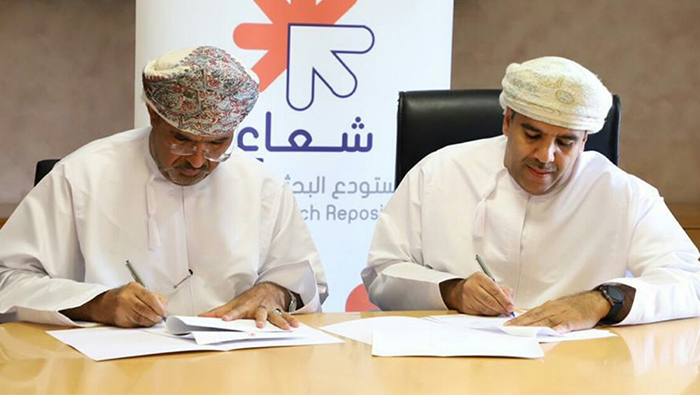
Muscat: The Research Council (TRC) has reaffirmed the harmony between the vision of the National Innovation Strategy (NIS) with Oman Vision 2040, reinforced by a political will and continuous institutional integration, which has resulted in various initiatives in all fields, and is evident through its innovations, institutions and efforts.
As research and development are some of the main components of the innovation system, TRC has also updated the National Strategy for Research and Development (NSRD 2040) to align with Oman Vision 2040’s perspective that research leads to the development of a knowledge-based society and capable national cadres, which focuses on transferring knowledge into economic revenue.
Dr Sharifa bint Hamoud Al-Harthy, Director of National Innovation Strategy (NIS) at TRC, explained, “The completion of the first stage of the NIS in the Sultanate has enabled us to reap the low-hanging fruits, in the form of focusing on activating existing national initiatives, strengthening interactive relationships between institutions of knowledge and innovation, strengthening relationships with technical and financial supporters, and strengthening relationships with the users of intellectual and scientific production to establish a solid and fully-fledged national system and active circles that lead to the second stage, which is the stage of sustainable empowerment of innovation circles and actors in all components of the national system, starting from 2021.”
Therefore, it has become important to shed light on what has been achieved in reaping low-hanging fruits stage. Moving forward, innovation has become the main focus of Oman 2040 vision, with the vision of the NIS to place the Sultanate among the top 20 countries in the Global Innovation Index by 2040.
Dr Sharifa further elaborated, “One of the most significant components of the NIS is the existence of a political will, which was represented through the speech of His Majesty Sultan Haitham bin Tarik, stating that research and innovation should be at the top of the national priorities. Moreover, His Majesty’s directives to review relevant legislation, relevant laws and the structure of the administrative organisation are highly important to the NIS, as they will encourage the building of a competitive national economy based on knowledge and innovation.”
Dr Sharifa added that the Sultanate’s indicators in the Global Innovation Report have improved, through the issuance of a number of possible laws, including the Foreign Investment Law, the Bankruptcy and Insolvency Law, the Privatisation Law and the Partnership between Public and Private Sector Law.
Dr Sharifa also addressed the technical and communication role in enabling innovation, as it is one of the indicators that contribute to achieving a knowledge-based economy and achieving the goals of the NIS. She stated that the expansion of the broadband network and comprehensive digital services, which emerged as a result of the initiatives taken during this stage, has been achieved after the government harnessed various efforts and financial capabilities to implement the ‘Comprehensive Digital Service’ initiative, to cover all regions of the Sultanate with communications and internet services via satellite during 2020, in addition to strengthening the networks to provide high-speed communication services, especially in remote areas. This initiative was established in cooperation between the Ministry of Technology and Communications, Oman Telecommunications Company (Omantel), Telecommunications Regulatory Authority, and local telecommunications companies.
Furthermore, the role of the Omani Satellite Company will enhance the Sultanate’s position in the world reports and will contribute effectively to enabling the digital platforms launched by the Ministry of Education to promote distance learning. It is also expected to enable the digital initiatives of the Ministry of Higher Education, Sultan Qaboos University, and the Ministry of Manpower, represented in the technical and vocational colleges by providing education and distance learning for all students in all governorates of the Sultanate. It is also hoped that a third telecommunications service provider will be included at the beginning of 2021, which will work to reduce the prices of telecommunications services, and enable the integration of the next stage towards a digital Oman and smart services in all sectors. Additionally, TRC is contributing to the rise of the status of the digital world in Oman through a number of programs affiliated with TRC, such as the Oman Research and Education Network (OMREN), Oman Virtual Science Library (Masader), and Oman Research Repository (Shuaa), in collaboration with relevant partners, such as Omantel.
Commenting on the national innovation capabilities, Dr Sharifa said, “With regard to the enabling of linkages between digital applications and innovation-related activities for the sake of developing innovative services and products, the past few days have demonstrated the ability of the Omani youth and national cadres to innovate and develop a number of digital applications in several areas, especially during the current global crisis caused by the COVID-19 virus. In collaboration with the Oman Technology Fund (OTF) and the institutions concerned with the development of SMEs and start-ups, a number of applications and innovations have been launched to combat this crisis as follows;
1. The ‘dakhterclinic’, which is an application launched by Omani doctors for providing specialised online medical consultations by specialist doctors for emergencies.
2. The ‘Wareedco’ platform, which has been designed to offer medicine home delivery to the elderly people in a bid to avoid infection with COVID-19.
3. The smart platforms ‘behar_market’ and ‘Athmar’. These platforms have been launched with the Ministry of Agriculture and Fisheries, and Muscat Municipality to convert auctions in the Central Fish Market to online ones.
4. The smart platform ‘Fastmovers’ that has been tailored for ordering refrigerated trucks for transporting fish and vegetables from central markets.
5. The distance-learning platform ‘easy’, which offers distance-learning services.
6. The ‘Igtimaati’ application that provides the video conferencing service.
7. The use of unmanned aircraft (drones) to sterilise Omani neighbourhoods, cities and villages by Muscat Municipality.
8. The use of unmanned aircraft (drones) for comprehensive investigation and remote examination of heat temperatures for individuals suspected of COVID-19 infection.